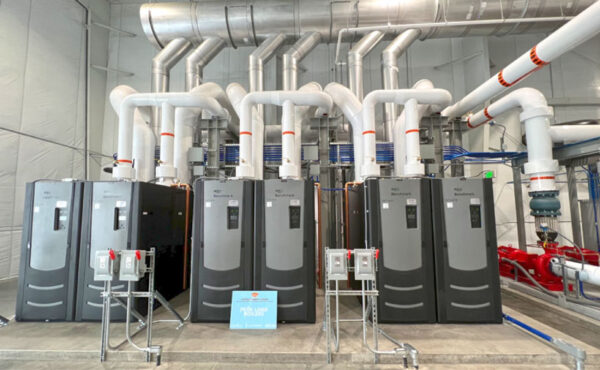According to the International Energy Agency, buildings and their construction combined are responsible for one-third of total global energy consumption and nearly 15 percent of carbon dioxide (CO2) emissions. Additionally, energy-related CO2 emissions from buildings have risen an average of one percent per year since 2010.
The time is now for quick, innovative solutions to our energy production.
How One Institution Has Utilized a Wastewater Heat Recovery System for their Energy Production
Some corporations, municipalities, and developers have turned to drain water heat recovery systems as a means of energy ventilation recovery, in order to assist in reducing CO2 emissions. In fact, The National Western Center (NWC) campus now sources 90 percent of its heating and cooling from an existing 72-inch diameter wastewater infrastructure pipe, called the Delgany Interceptor. The system is the largest wastewater heat recovery (WHR) system in the U.S. to date. Once complete, seven buildings will connect to the WHR system with the capacity to expand.
Below is some information about how drain water heat recovery systems work.
The Three Primary Elements of a Wastewater Recovery System
- A 25-foot-deep wet well connection at a nearby utility hole which pulls wastewater out and then returns it to the Delgany Interceptor.
- An 8,790-square-foot Central Utility Plant (CUP) containing solids separation equipment (SHARC) and plate and frame heat exchangers, which transfer heat from the wastewater pipe to a clean water ambient distribution pipe.
- A clean water ambient loop distributes warm water to all the buildings, housing heat recovery chillers, and compatible HVAC equipment.
On extreme hot/cold days, this drain water heat recovery system is supplemented by high-efficiency natural gas boilers and chillers, which ensures reliability and competitive cost.
The Environmental and Economic Benefits of Wastewater Heat Recovery Systems
This new wastewater heat recovery technology helps the NWC meet its ambitious clean energy goals and offers a great solution for developers and corporations who are looking for energy solutions with both environmental and economic benefits.
In fact, this type of heat recovery system is estimated to avoid emitting 2,600 metric tons of CO2 annually — the equivalent of eliminating 6.6 million vehicle passenger miles driven in Denver every year. By moving away from natural gas combustion, the system improves air and water quality in surrounding environmental justice communities and assists in the City’s efforts to deliver more equitable health outcomes. It also conserves up to 3,168 kgal of water yearly, the equivalent of more than five Olympic-size swimming pools. The benefits of this system include high efficiency, lower capital costs, and a reliable and resilient energy source during outages.
The success of this project required coordination between the City and County of Denver, the National Western Center Authority, National Western Stock Show, Colorado State University, Metro Water Recovery, CenTrio, AECOM, and Saunders Construction.
Together we were able to come up with an environmentally friendly and economical solution to energy ventilation recovery that overall benefits our city.
Check out this wastewater heat recovery documentary, featuring members of the team, to hear more about what makes this project so special.
Media Contact
Teena Bergstand
Senior Director of Marketing Strategy
(303) 699-9000
m.inquiries@saundersinc.com

